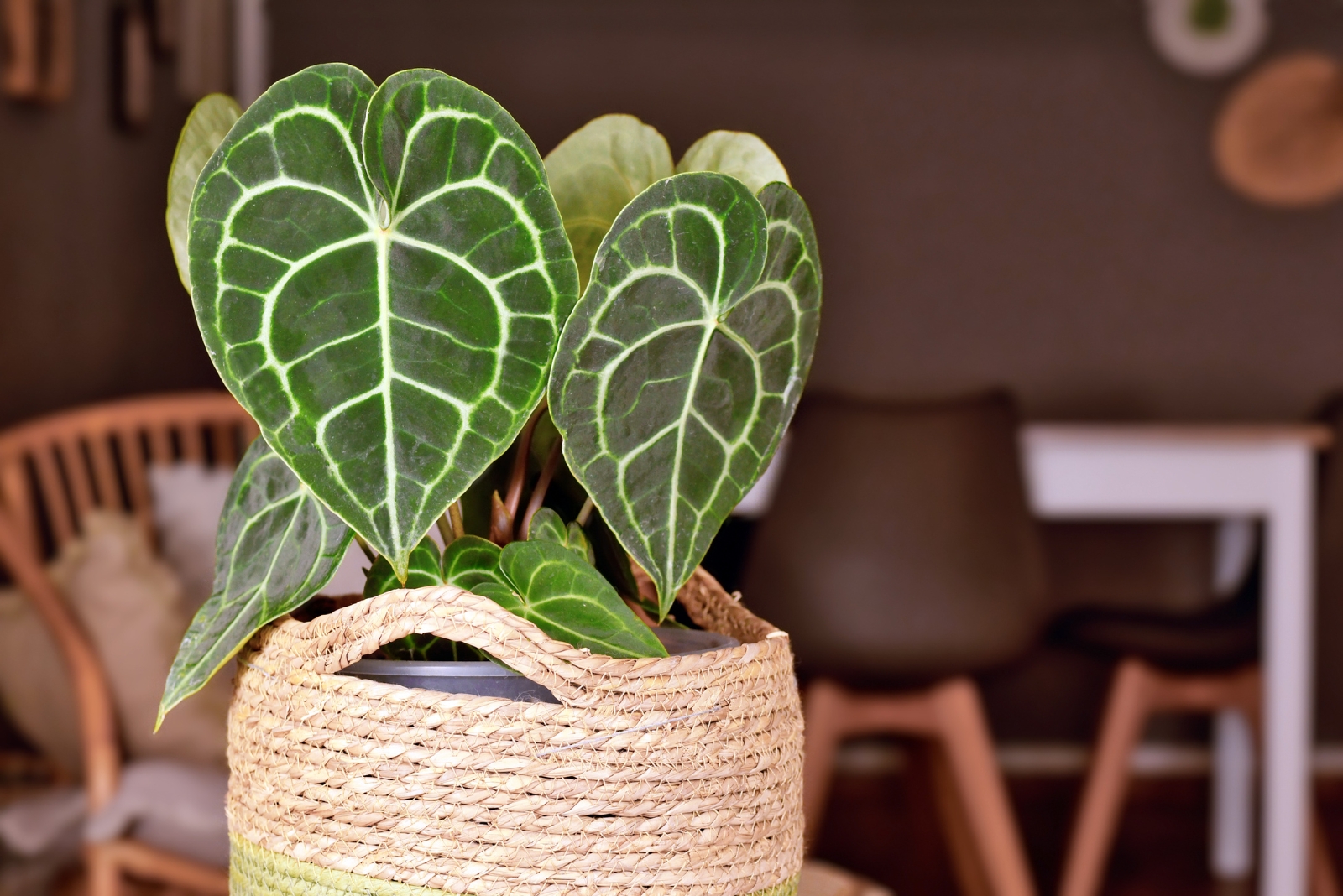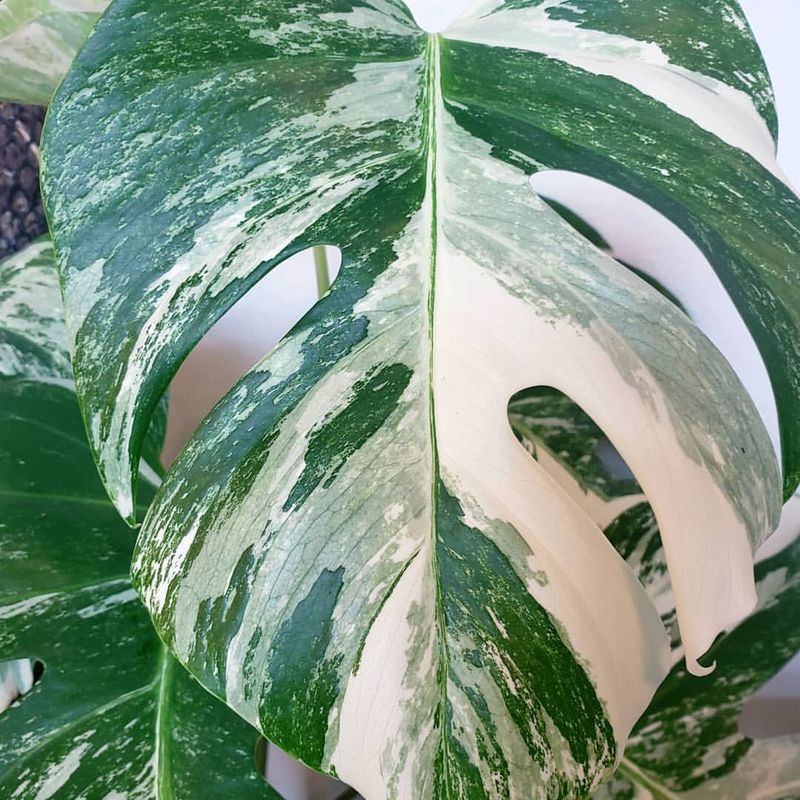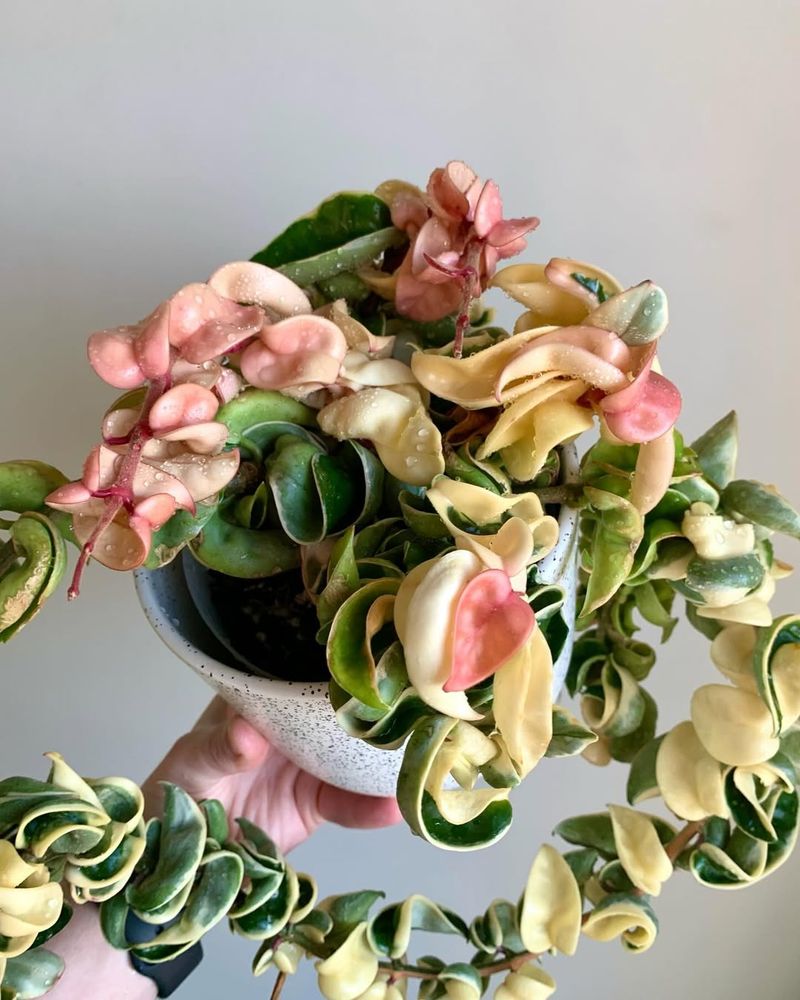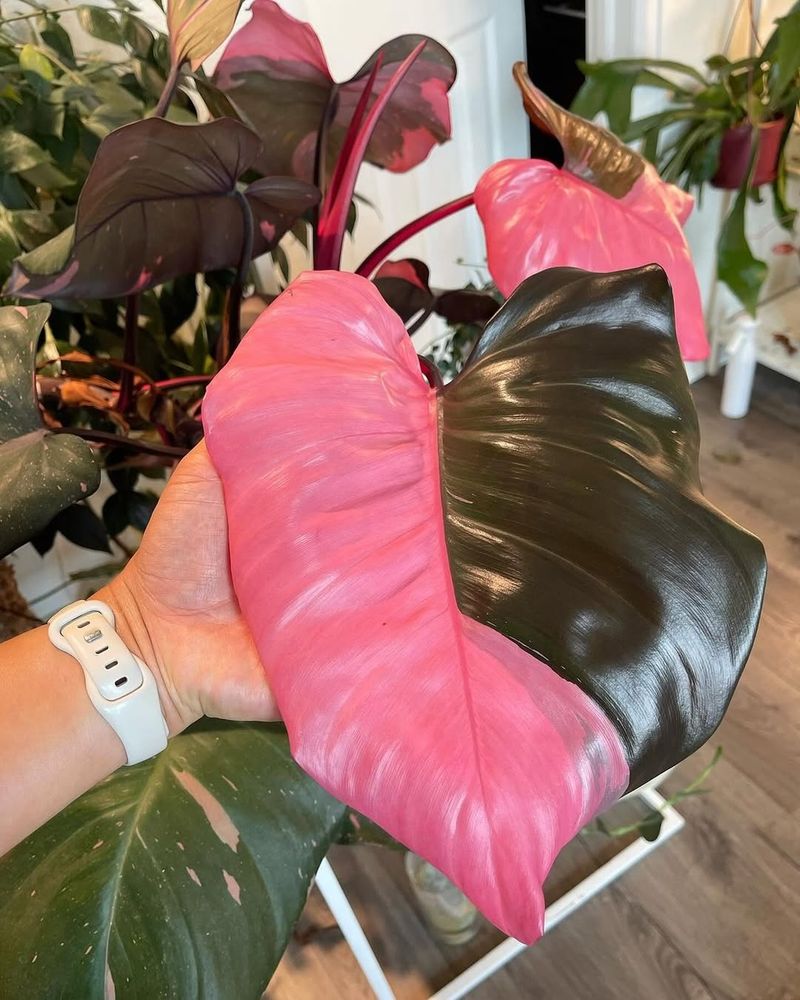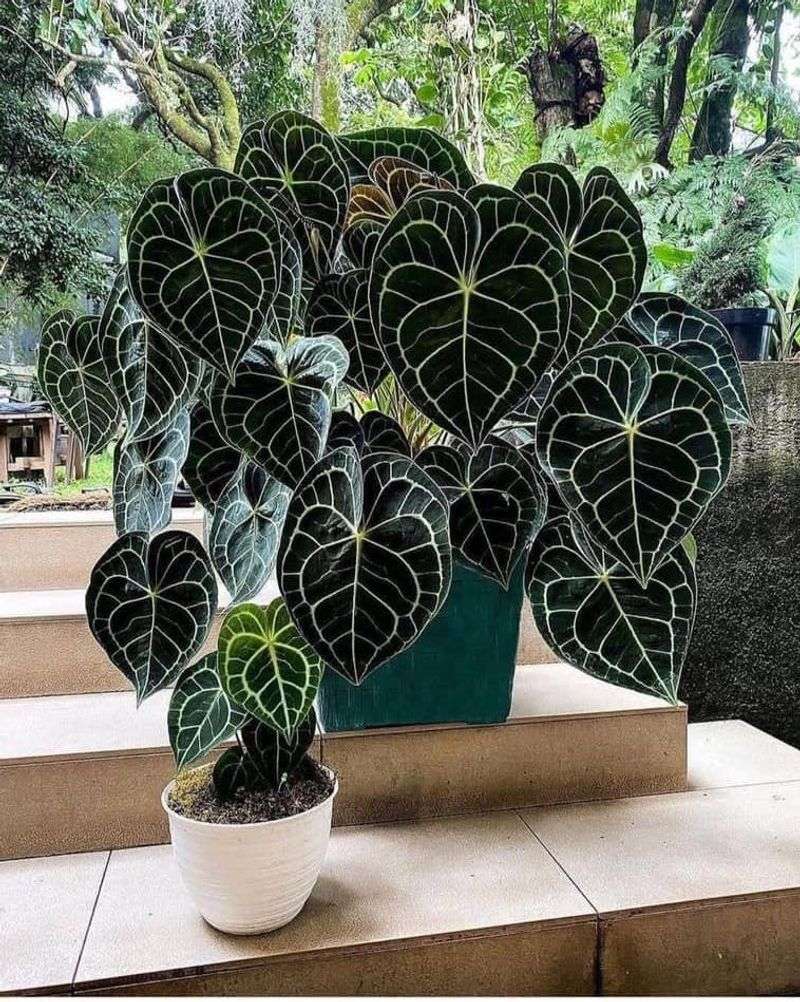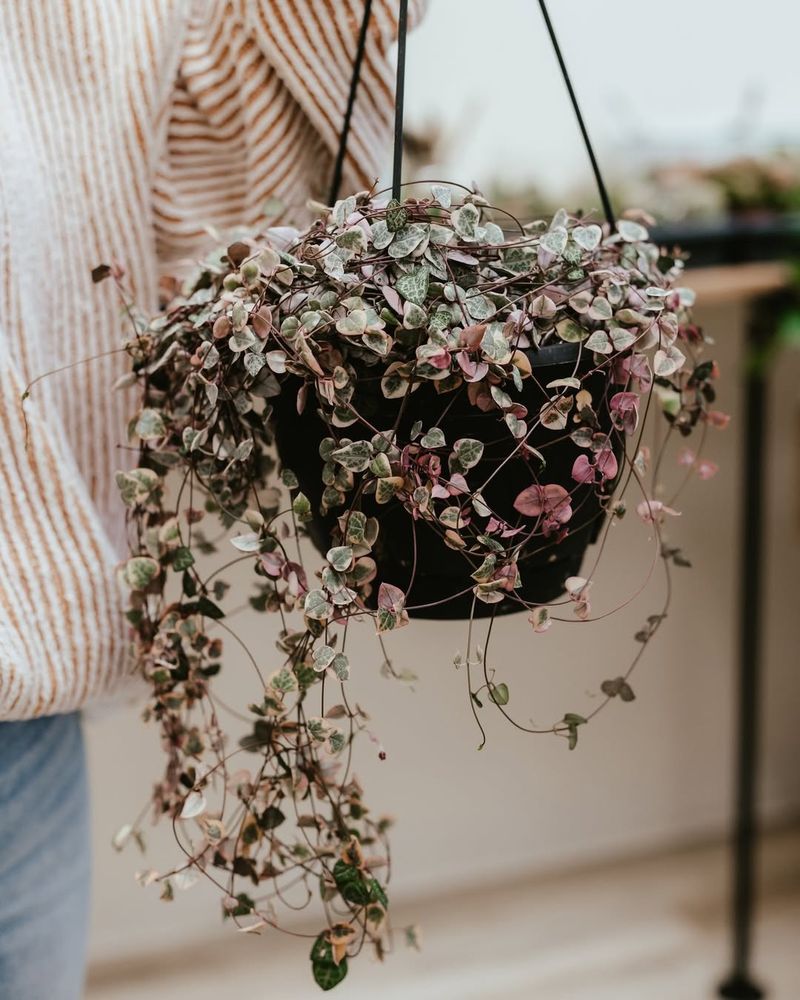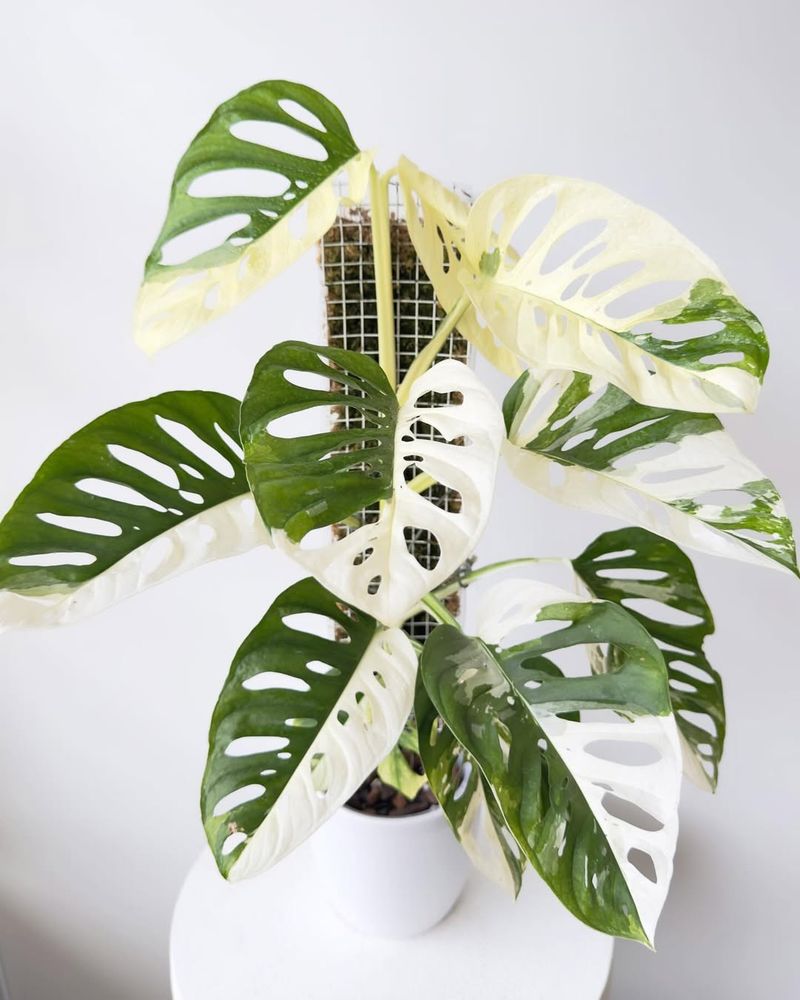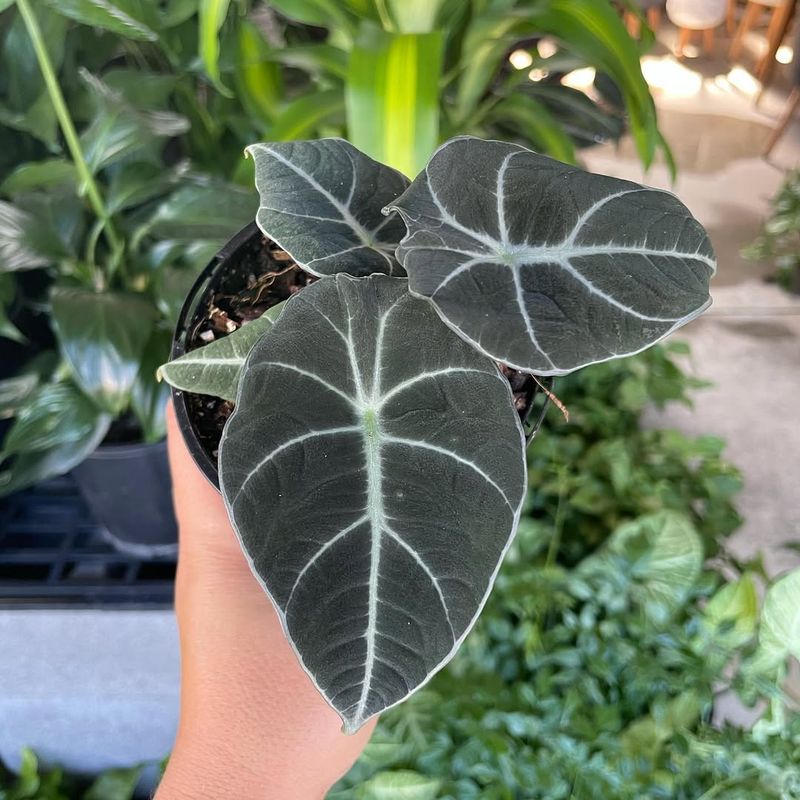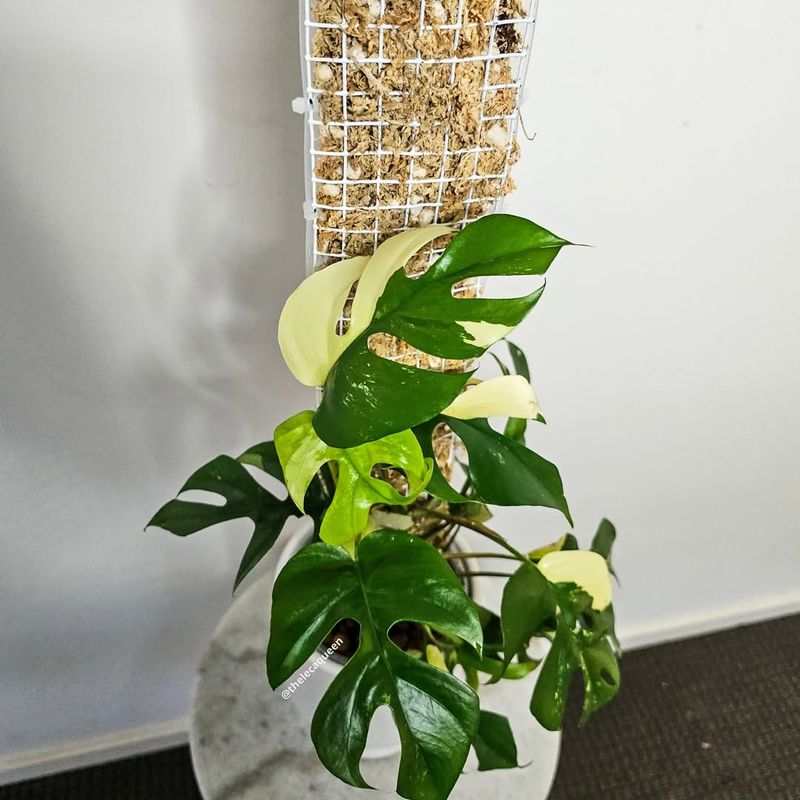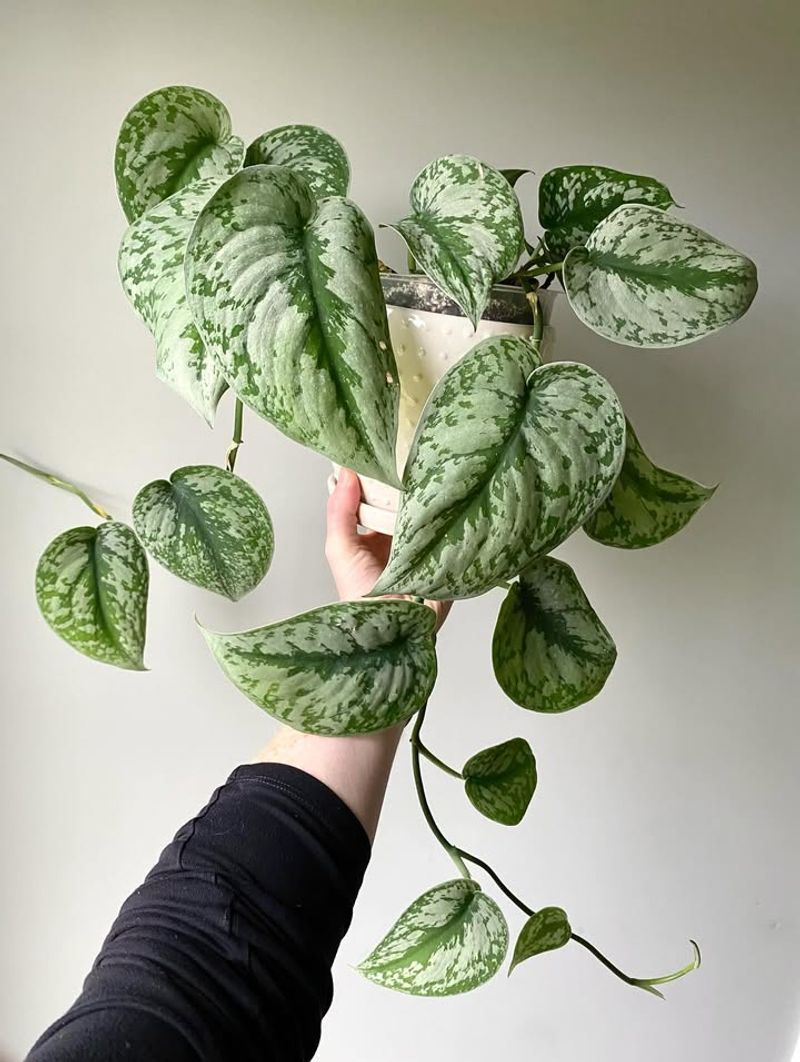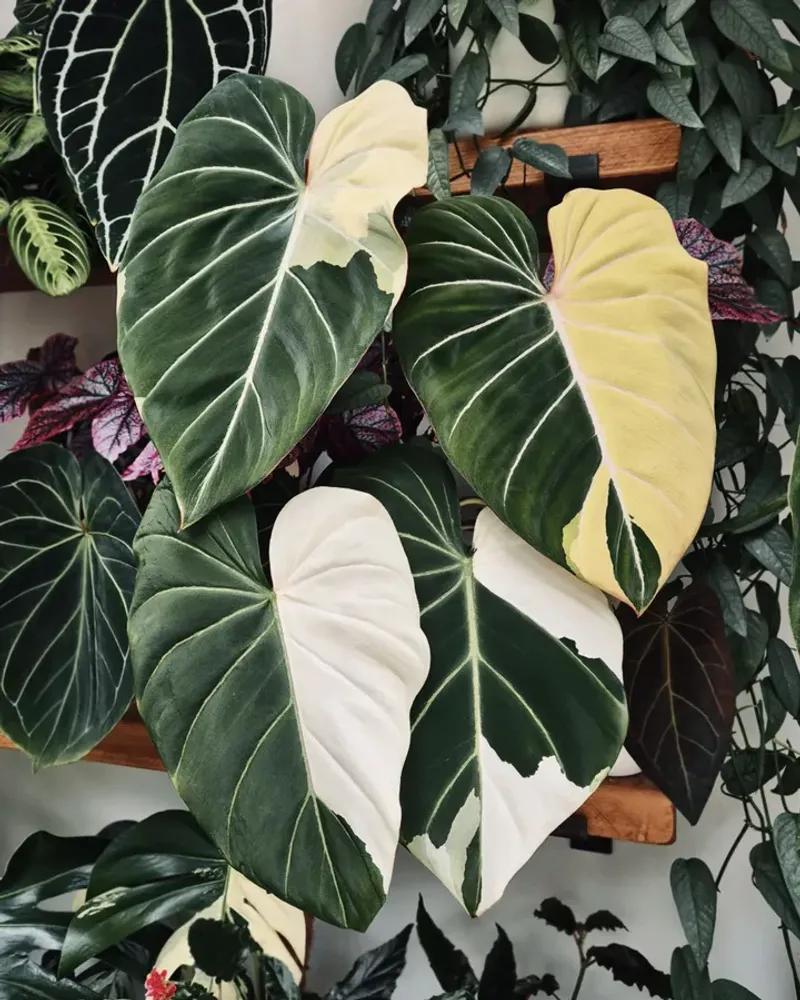Your grandmother’s windowsill might be hiding a goldmine. Those old houseplants she’s been caring for decades could actually be worth serious money to collectors and plant enthusiasts.
Michigan homes are filled with vintage varieties that have become surprisingly valuable in today’s plant market.
1. Variegated Monstera Deliciosa
Grandma probably called this her “Swiss cheese plant,” but if it has white or cream-colored streaks running through those big, holey leaves, you’ve struck gold. A single cutting can sell for hundreds of dollars online.
Plant collectors go absolutely wild for the marble-like patterns on each leaf. No two leaves look exactly the same, making every plant completely unique.
Michigan’s moderate indoor temperatures actually help these tropical beauties thrive. Keep it near bright, indirect light and water when the soil feels dry an inch down.
2. Hoya Carnosa Compacta
With twisted, rope-like vines covered in thick waxy leaves, this quirky plant looks like nature made living jewelry. Grandma might have inherited hers from her own mother, and mature specimens fetch premium prices.
Collectors love older plants because they bloom with fragrant, star-shaped pink flowers that smell like chocolate. Younger plants can take years to produce these stunning clusters.
Neglect actually helps this one thrive! Water sparingly and give it plenty of sunshine. The older and longer the vines, the more valuable your grandmother’s plant becomes to enthusiasts.
3. Philodendron Pink Princess
Bubblegum-pink splashes across dark green leaves make this philodendron look hand-painted by an artist. If grandma has one with stable pink coloring, plant influencers would happily pay top dollar for cuttings.
The pink comes from a genetic mutation that’s tricky to maintain. Plants can revert to all-green, making specimens with consistent color incredibly sought-after in the houseplant community.
Bright indirect light helps preserve that signature pink hue. Too much shade causes the plant to lose its valuable coloring, while too much sun burns those delicate leaves.
4. Anthurium Clarinervium
Heart-shaped leaves with bright white veins look like someone drew on them with a silver marker. This Mexican native has become ridiculously expensive, especially larger, well-established plants like grandma probably owns.
The velvety texture of the leaves feels almost unreal to touch. Mature plants produce unusual spadix flowers, though most people grow them purely for that stunning foliage.
High humidity makes these plants happy, which Michigan basements naturally provide during winter. Keep soil consistently moist but never soggy, and avoid cold drafts from windows.
5. String of Hearts Variegated
Delicate chains of tiny heart-shaped leaves in pink, cream, and green cascade down like living Valentine decorations. If grandma’s has this rare variegation, you’re looking at a seriously valuable trailing plant.
Regular string of hearts is already popular, but the variegated version sells for five times as much. Long, established strands that reach the floor are especially prized by collectors nationwide.
Grandma knew to let the soil dry completely between waterings since these are technically succulents. Bright light intensifies those pretty pink tones that make this variety so expensive.
6. Monstera Adansonii Variegated
Smaller cousin to the famous monstera, this climbing vine develops natural holes in its leaves as it matures. White or yellow variegation transforms it from common to incredibly costly overnight.
A single rooted cutting of the variegated type regularly sells for several hundred dollars. Grandma’s mature plant with multiple vines could potentially be worth thousands to the right buyer.
Michigan’s indoor climate suits these perfectly when kept warm and humid. They love climbing, so providing a moss pole or trellis encourages larger leaves and more dramatic fenestrations.
7. Alocasia Black Velvet
Almost black leaves with silvery-white veins create a gothic elegance that modern plant parents obsess over. Despite staying relatively compact, mature specimens with multiple leaves command surprisingly high prices from collectors.
The velvety texture gives this alocasia its name and its appeal. Grandma might have gotten hers decades ago when they were more common, but they’ve become expensive and hard to find recently.
Consistent warmth and humidity prevent the dramatic leaf-drop these plants are known for. Michigan winters can be tough on them, so keeping them away from cold windows helps maintain their value.
8. Rhaphidophora Tetrasperma Variegated
Often nicknamed “mini monstera,” this fast-growing climber develops split leaves that look like tiny monstera deliciosa. Yellow or white variegation makes it exponentially more valuable than the plain green version.
Grandma’s plant probably grew like a weed, wrapping around whatever support she gave it. That vigorous growth habit makes variegated specimens especially desirable since they produce more cuttings for propagation.
Bright indirect light keeps the variegation strong and prevents reversion to solid green. These plants appreciate climbing support and regular feeding during their active growing season in spring and summer.
9. Scindapsus Pictus Exotica
Silvery paint splashes across dark green leaves give this trailing plant a metallic shimmer that catches every bit of light. The exotica variety has much larger silver patches than common types, making mature plants quite valuable.
Grandma might call it her “satin pothos,” though it’s actually not a true pothos at all. Long, established vines with consistent variegation are what serious collectors hunt for online and at plant swaps.
Low to medium light suits this easygoing grower perfectly. Michigan’s variable indoor conditions don’t bother it much, which is probably why grandma’s has survived and thrived for so many years.
10. Philodendron Gloriosum
Enormous heart-shaped leaves covered in soft velvet and adorned with bright white veins make this crawling philodendron absolutely stunning. Mature plants with multiple large leaves are worth serious money in today’s competitive plant market.
Unlike climbing philodendrons, this one grows horizontally across the soil surface. Grandma probably repotted hers into wider containers as it spread, which is exactly what increases its value over time.
High humidity and consistent moisture keep those magnificent leaves looking their best. The velvety texture can develop brown edges in dry air, which Michigan’s winter heating sometimes causes without proper humidification.

